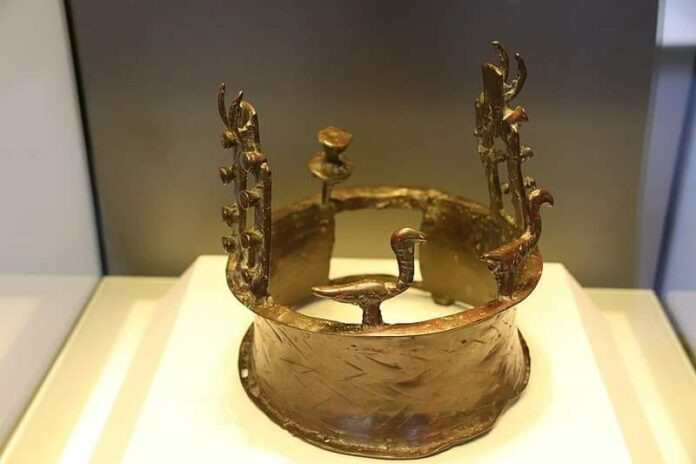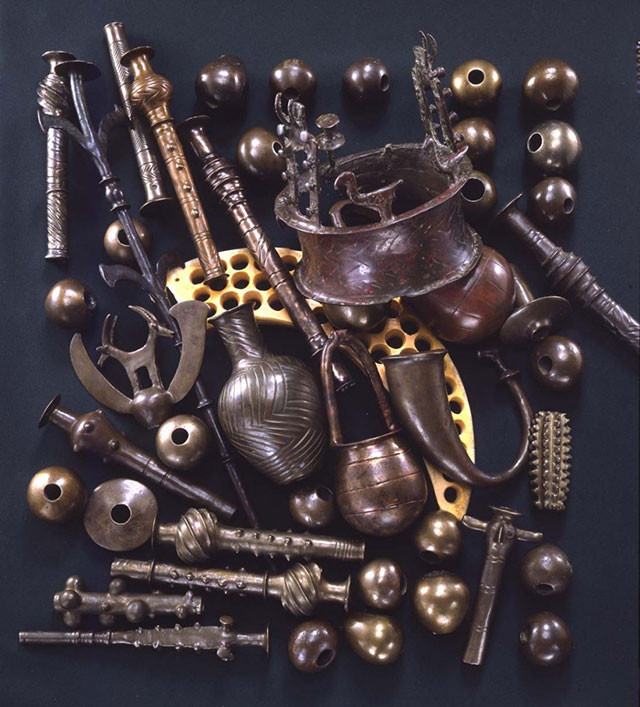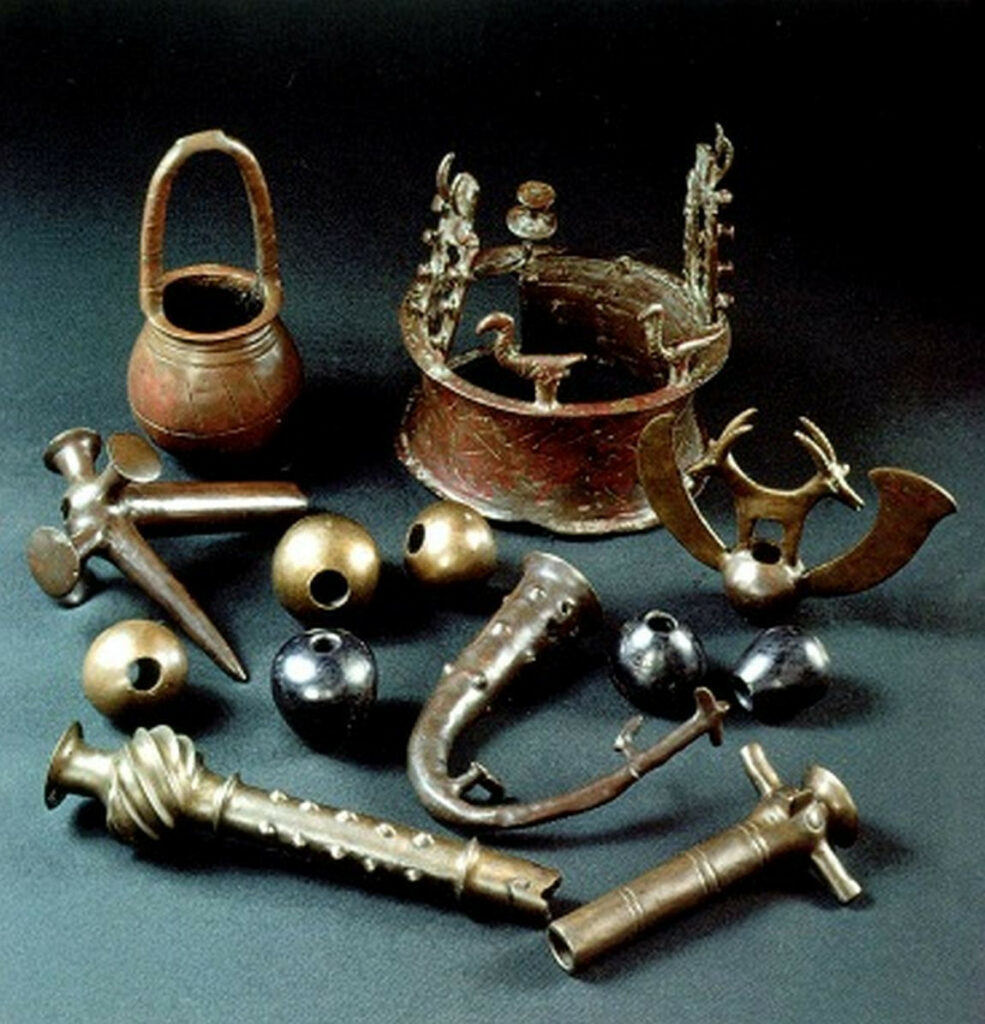A Glimpse into the Distant Past

In the sun-baked lands of the ancient Levant, a remarkable discovery was made that would shed light on a civilization long forgotten. In 1961, archaeologists unearthed a treasure trove of artifacts known as the Nahal Mishmar Hoard, hidden away in a natural crevice of a cave. Among these priceless relics was an object that would captivate the world: the oldest known crown in human history.
The Crown of Vultures and Facades

This ancient crown, shaped like a thick ring and adorned with curious protrusions, tells a story of power, prestige, and religious significance. Its rim features intricate designs of vultures and what appear to be building facades, hinting at the complex beliefs and practices of its creators. Carbon dating of the reed mat in which it was wrapped suggests that this masterpiece dates back to at least 3500 BC, a time when copper was becoming increasingly important in the region.
The Chalcolithic Revolution
Masters of Fire and Innovation

The period in which this crown was created, known as the Chalcolithic or Copper Age, was a time of great innovation and social change. As Professor Daniel Master of Wheaton College notes, “The fascinating thing about this period is that a burst of innovation defined the technologies of the ancient world for thousands of years.”
A Glimpse into Ancient Society

The Nahal Mishmar Hoard, which includes the crown, mace heads, scepters, and various tools and weapons, provides valuable insights into the social structure and religious practices of the time. These artifacts suggest a well-organized society with a clear hierarchy and a rich spiritual life, where copper objects held immense value.
The Mystery of the Cave of Treasures
A Sacred Cache

The location where these treasures were found, now known as the ‘Cave of Treasures,’ has led to intriguing theories about their origin. Some scholars suggest that these may have been the sacred treasures of the Chalcolithic Temple of Ein Gedi, located about 12 kilometers away. The care with which these objects were hidden speaks to their immense importance to the people who safeguarded them.
Legacy of the Ancient Crown
Inspiring Modern Minds
In 2020, the ancient crown and other artifacts from the Nahal Mishmar Hoard were unveiled to the public as part of the ‘Masters of Fire: Copper Age Art from Israel’ exhibit at New York University. As Jennifer Chi, the exhibition’s director, observed, “To the modern eye, it’s stunning to see how these groups of people, already mastering so many new social systems and technologies, still had the ability to create objects of enduring artistic interest.”

The story of this ancient crown continues to captivate us, bridging the gap between our world and that of our distant ancestors. It stands as a testament to human creativity, spirituality, and the enduring power of art to speak across millennia.
